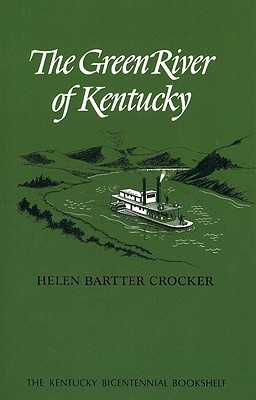
- We will send in 10–14 business days.
- Author: Helen Bartter Crocker
- Publisher: University Press of Kentucky
- ISBN-10: 0813193052
- ISBN-13: 9780813193052
- Format: 12.7 x 20.3 x 0.8 cm, minkšti viršeliai
- Language: English
- SAVE -10% with code: EXTRA
Reviews
Description
Cutting a wide east-west swath from the Appalachian foothills to the heart of the western Kentucky coalfields, the Green River valley extends from below the Tennessee border in the south to the Ohio River in the north. The Green River of Kentucky presents a picture of the unity and diversity of the people living in the Green River valley.
Helen Bartter Crocker finds that each generation of its people approached the river in a distinctive way. Early settlers used the river simply as it was -- crooked and narrow with an unpredictable water flow, and navigable only under high-water conditions. The sons of these pioneers were interested in bringing steamboats to the valley; until they succeeded in persuading the state legislature to improve the Green River and its tributary, the Barren, by a series of locks and dams, however, volunteers would work -- often up to their necks in water -- until they cleared the river sufficiently to allow steamers to reach Bowling Green at high water.
When the locks and dams were reopened following the Civil War, a local private corporation gained a near-monopoly of the river trade. Public outcry against this private ownership caused the federal government to take control, and through the Corps of Engineers, to undertake extensive river improvements. After the Great Depression, when trade was almost at a standstill, additional federal funds were appropriated for flood-control dams in the upper river and modern locks in the lower river to harness the valley's industrial potential. These opened up coal barging and recreational facilities, which ensured the future economic well being of the Green River valley.
EXTRA 10 % discount with code: EXTRA
The promotion ends in 21d.19:36:36
The discount code is valid when purchasing from 10 €. Discounts do not stack.
- Author: Helen Bartter Crocker
- Publisher: University Press of Kentucky
- ISBN-10: 0813193052
- ISBN-13: 9780813193052
- Format: 12.7 x 20.3 x 0.8 cm, minkšti viršeliai
- Language: English English
Cutting a wide east-west swath from the Appalachian foothills to the heart of the western Kentucky coalfields, the Green River valley extends from below the Tennessee border in the south to the Ohio River in the north. The Green River of Kentucky presents a picture of the unity and diversity of the people living in the Green River valley.
Helen Bartter Crocker finds that each generation of its people approached the river in a distinctive way. Early settlers used the river simply as it was -- crooked and narrow with an unpredictable water flow, and navigable only under high-water conditions. The sons of these pioneers were interested in bringing steamboats to the valley; until they succeeded in persuading the state legislature to improve the Green River and its tributary, the Barren, by a series of locks and dams, however, volunteers would work -- often up to their necks in water -- until they cleared the river sufficiently to allow steamers to reach Bowling Green at high water.
When the locks and dams were reopened following the Civil War, a local private corporation gained a near-monopoly of the river trade. Public outcry against this private ownership caused the federal government to take control, and through the Corps of Engineers, to undertake extensive river improvements. After the Great Depression, when trade was almost at a standstill, additional federal funds were appropriated for flood-control dams in the upper river and modern locks in the lower river to harness the valley's industrial potential. These opened up coal barging and recreational facilities, which ensured the future economic well being of the Green River valley.


Reviews